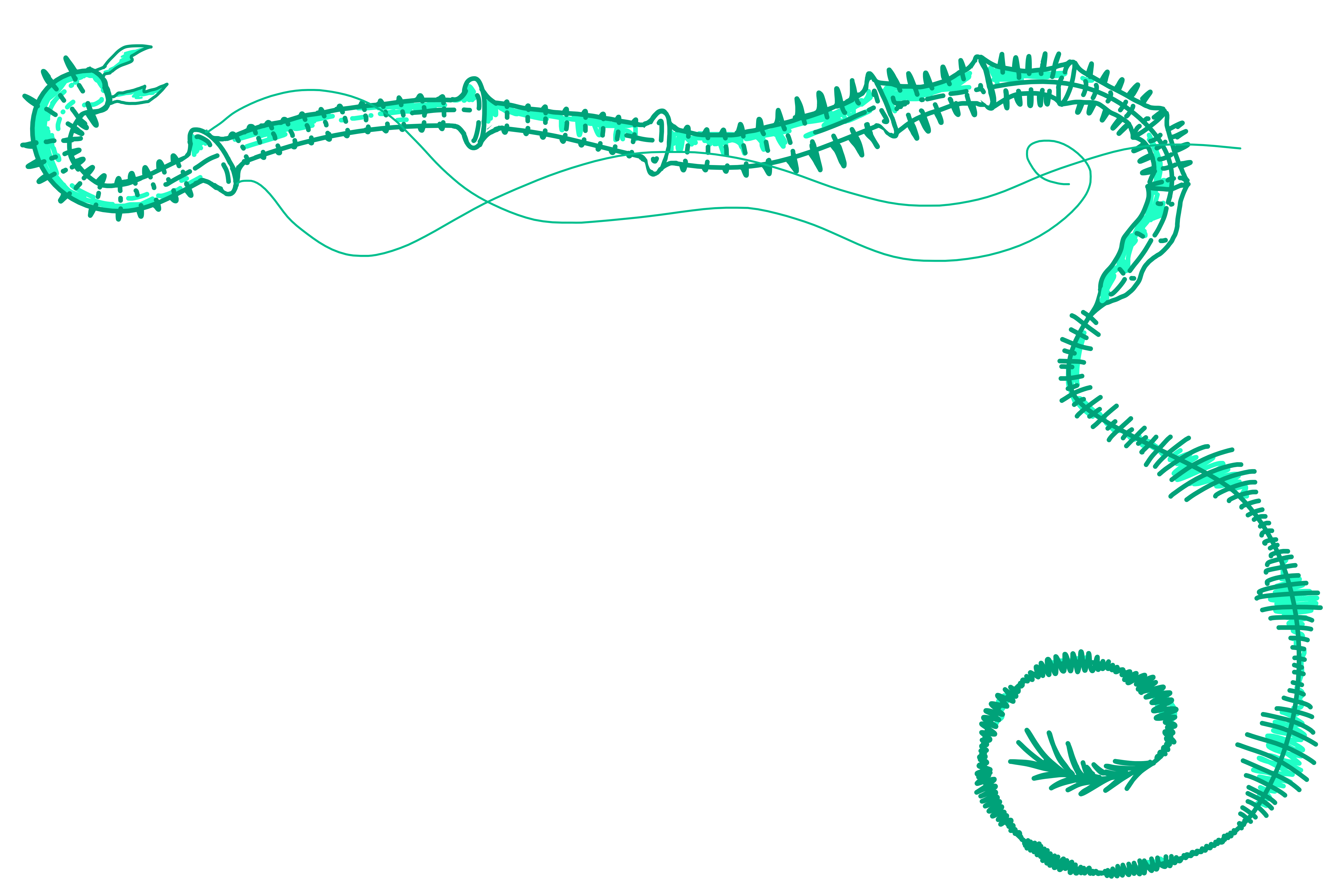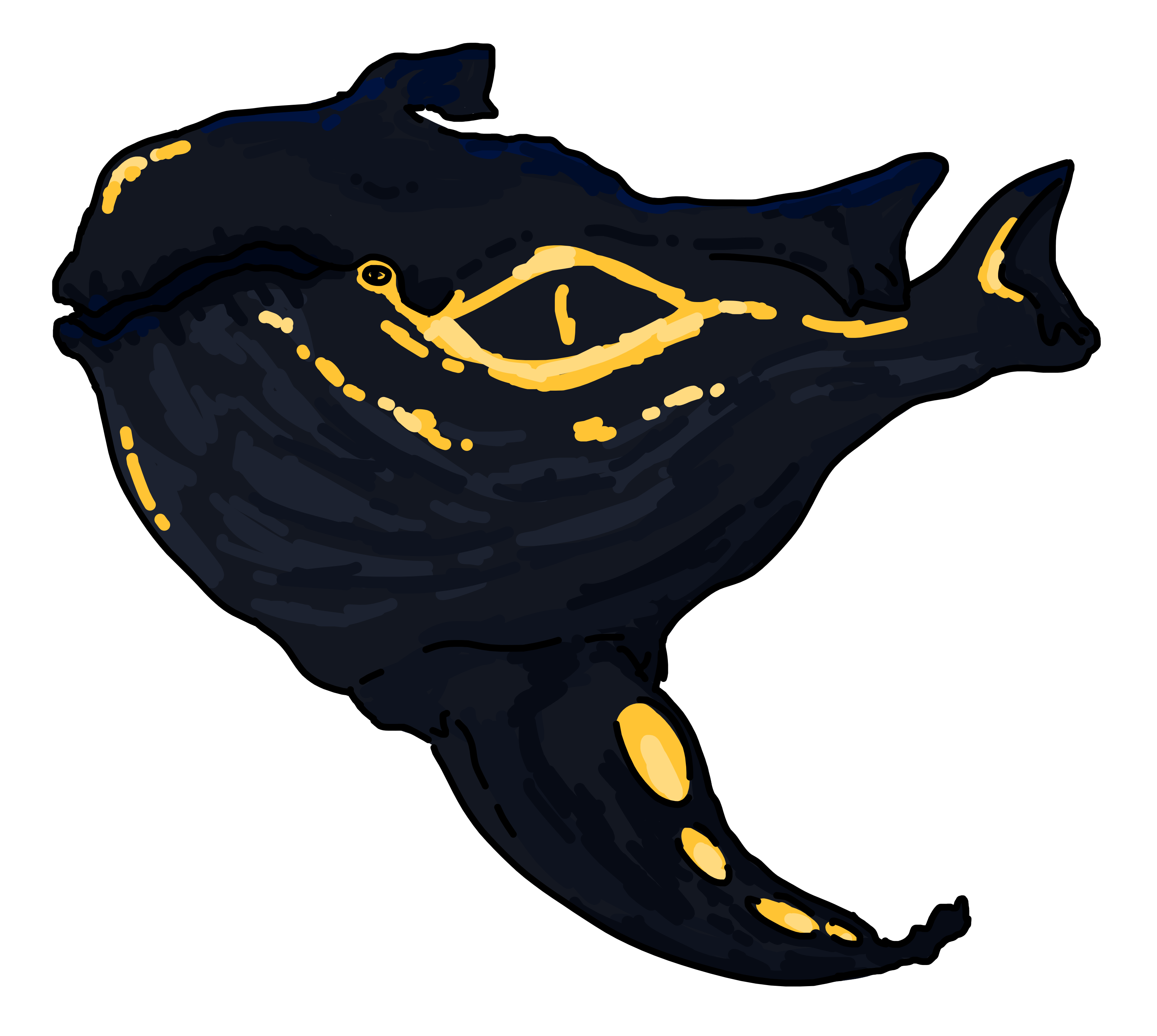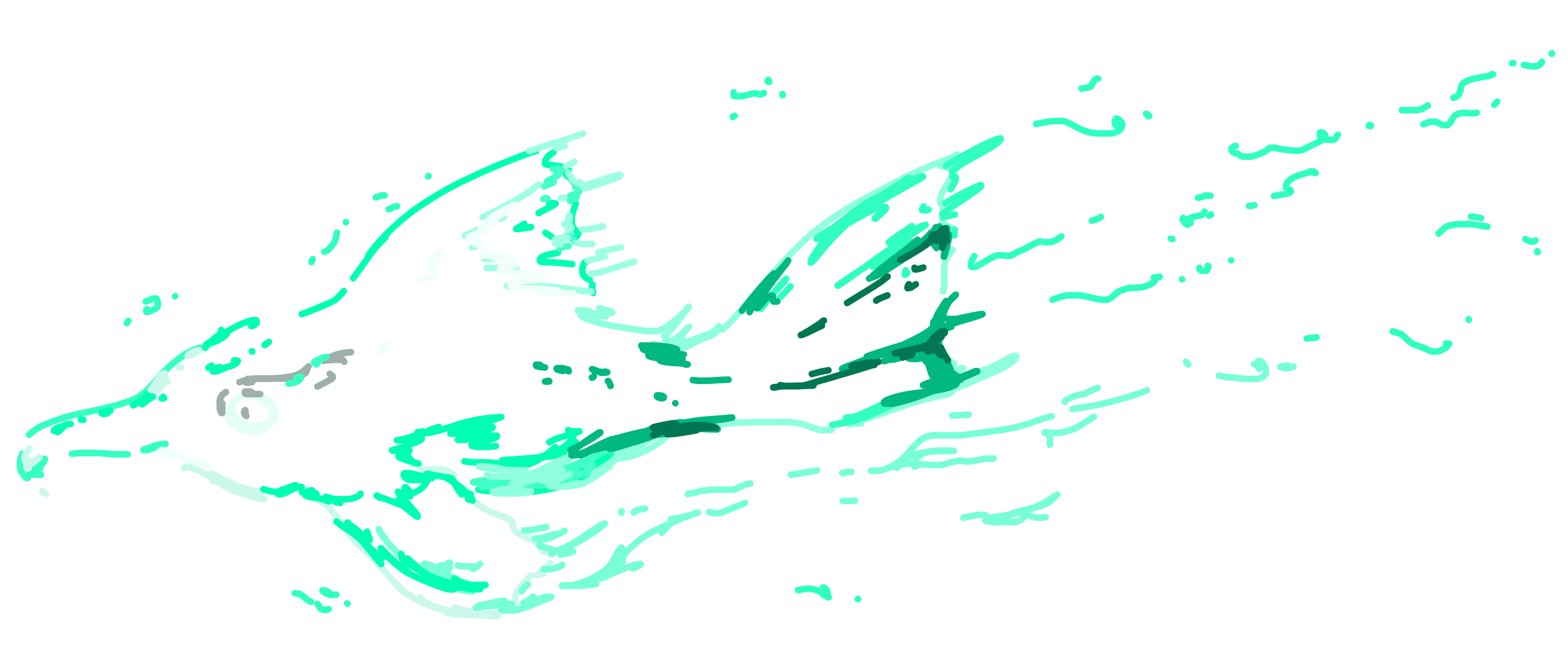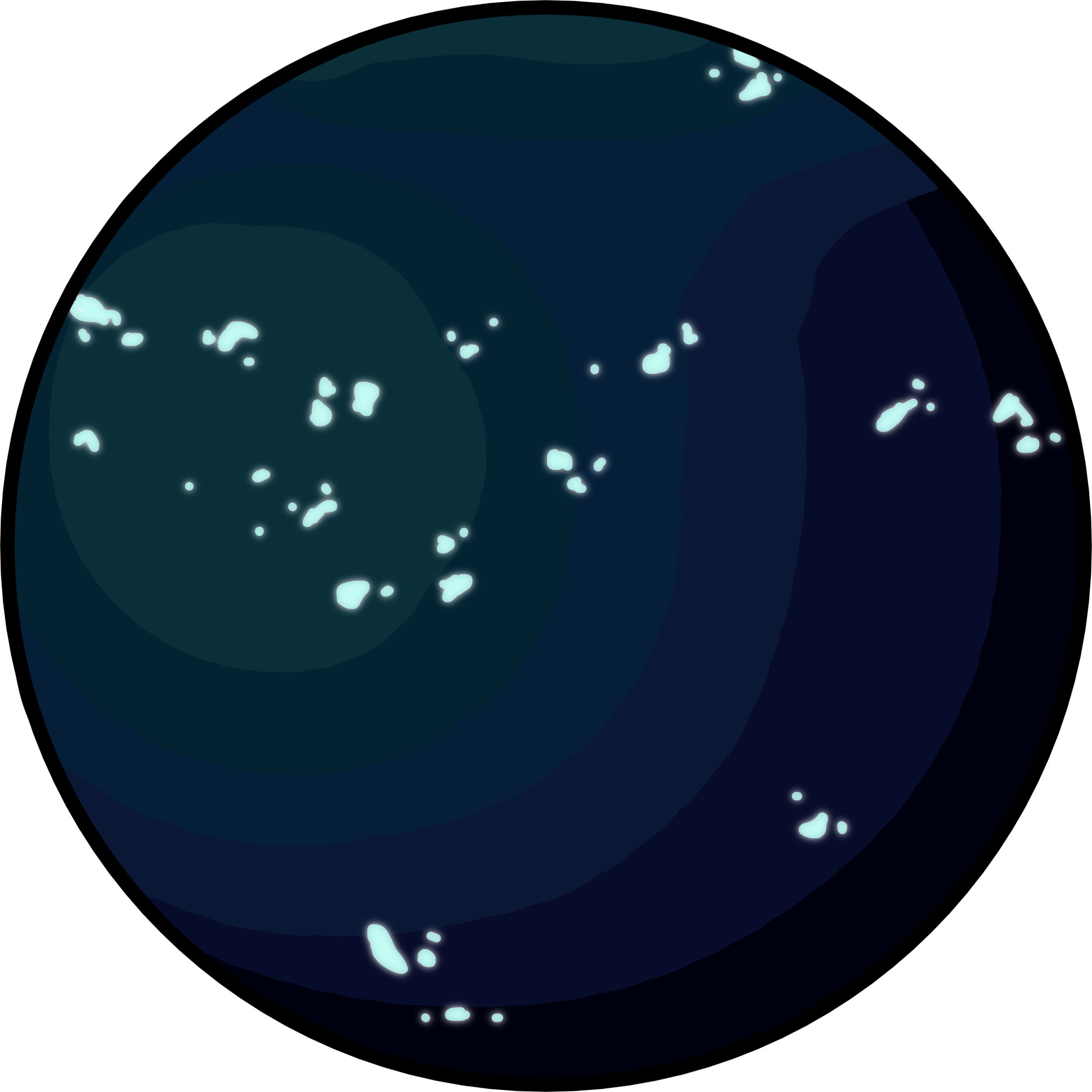Glassy Trench
The Glassy Trench is the deepest point on Hothiri, a vast ocean planet. The trench features striking anemones that produce glassy larva; large clusters of this larva glow in this abyss with an iridescent shimmer.
Several attempts to traverse this canyon have been made, each one futile. Remotely controlled submarines have all been destroyed and minimal footage has been recovered. What recordings have been salvaged show several giant tentacled creatures displaying incredible intelligence, attempting to communicate with the submarines before destroying them.
This place is a death sentence. No person has made it beyond the Twilight Zone, and the last attempt was made fifty years ago.
In all of Hothiri's history, the Glassy Trench, among other deep-sea regions, have been guarded by primordial beings. They defended the planet from its previous owners, the razheans, saturnians, and martians, before the oanie managed to acquire it. Since then, these beings have not been seen.
The Surface
The sun-kissed surface of the ocean above the trench is possibly the calmest water on the planet. Storms refuse to pass over the Glassy Trench, fluffy white clouds housing flocks of cloudhoppers. Their ecological niche is finding a new niche within other ecosystems, specifically on other planets. They are an invasive species on over two million planets in the Andromeda Galaxy and the Milky Way, stowing away on spacecrafts.
Cloudhoppers feed on small skaters, oceanic insects that flit across the rippling waves. They nest on gigantic purple kelp clumps that float up to the surface. Occasionally, a cloudhopper will grab a pink plasma jelly instead of a clump of kelp, a fatal mistake. These surprisingly intelligent polyp colonies lift their purple tentacles out of the water, grappling at anything drawn to its mesmerising pink buoy.
Night island turtles are the only natural predator of pink plasma jellies. These nocturnal reptiles wander the open ocean around the trench, floating on the surface of the water at night. From a distance, they are identical to a Night Island, the mysterious islands of Hothiri that only appear at night.
Serpal arcologies are unusal coral formations found bobbing along the waves above the Glassy Trench. These grey cities are dead, having broken off from the seabed, many miles below the surface. They are home to civilisations of deep-sea bacteria, and once they find their way to the surface, scattering.
I'm detecting several lifeforms below us. They don't seem to be too big. Should we dive?
Twilight Zone
Light becomes scarce in the Twilight Zone. Most animals begin relying on other senses to navigate, particularly echolocation. The trench sunfish wanders the trench in solitude, the all-seeing eye on either side of its flat body deterring predators, giving the impression this useless fish is much larger than in reality.
Raddies, giant shoaling fish, patrol their territories in the thousands. Their blade-like teeth slice through meat with a clean cut, severing meat, vessels, and bone.
The quiet echo of supersized creatures rings through the air in the Twilight Zone. Few have made it past these depths, all deterred by gigantic squids, wolfmouth whales, sonic rays, and countless other predatory megafauna. The competition for food grows stronger, as resources become more sparse. Intense battles between gigantic marine life are the norm in the Twilight Zone, the fallen sinking to the very bottom of the trench, feeding those in the depths.
As the submarine continued to dive farther into the trench, the world grew quieter. The only thing heard was the hum of the engine and the increasingly claustrophobic breaths of the crew. For a split second all was quiet. Then, something slammed straight into the submarine. Rows of sharp spines pierced the hood of the submarine as a great tentacle was dragged across the metal can, tearing it in two.
Midnight Zone
Light is now long gone. Bioluminescence is the trend, with almost all organisms in the Midnight Zone producing their own light. Carnivorous kelp covers the trench's cliffs, reaching out into the black void, grasping at anything that passes. Wolfmouth whales dive into the Midnight Zone to hunt, feeding on wolfmouth squids.
Ghost glimmers flit around the trench, around three thousand metres below sea level. Their body is translucent, barely visible besides streaks of blue trailing behind their fins. These fish can swim up to fifty kilometres per hour, dodging and weaving potential predators.
The front half of the submarine began sinking farther down the trench, getting caught by the hands of several kelp strands. The submarine was pulled in towards the cliff, metal merging becoming one with the help.
Abyssal Zone

Despite being thirteen metres in length, blistering paraworms are dwarfed by the creatures they infest. These horrifyingly poisonous annelids bury into the skin of their giant hosts, secreting numbing agents through their massive pinchers. They find a host while barely an inch in length, growing to their full size swimming around in the animal's blood vessels and organs.
Countless comb jelly species flutter around the Abyssal Zone of the Glassy Trench. They feed on glassy larva and have no predators, thanks to their magical ability to teleport short distances. When an animal's maw snaps shut around a comb jelly, it manifests itself into a new location, safe as anything.
Gigamouth sharks grow up to thirty metres in length, living up to five hundred years. Their bodily functions are so incredibly slow in order for them to maintain what little energy they have at any one time.
Erm... what is that? I am so glad this is a live feed, and we're not actually down there. That's an organ parasite. It's twice as big as our submarine. What the HELL does it infest?!
Seabed
Collect a Sticker!
The cafeteria in the underwater factory you work at just introduced a new collectible sticker. Better add it to Your Stickerbook! Click to collect sticker: HothiriScuttling scavengers scour the seabed in search of a delicious morsel to keep them going. Crustaceans gather around tiny thermal vents, heating up the water enough to allow plants to grow.
Benthic stingrays glide slowly over the seabed in search of food. They stir up the ground to confuse and disorient prey, sucking up as much as possible into their mouths, filtering out sand and silt while crushing food in their iron beaks.
Eight orange tentacles lie motionless on the seabed. They are warm to the touch, but do not move. They seem to stretch for eternity, seemingly with no beginning nor end. They are shackled to the seabed in places with chains bigger than a house.
Don't dive this deep. Do not approach the seabed. If you spot any etchings on the trench walls, swim the other way. It's watching you. It's waiting for you. For you. What... are you.


























Omg amazing art! I love the Trench Sunfish <3 Great article!! and the seabed o.O
> Root Directory is my hub world <
Legends of the Dragonguard • /dev/null
WorldEmber 2025
Thank you so much!! <33